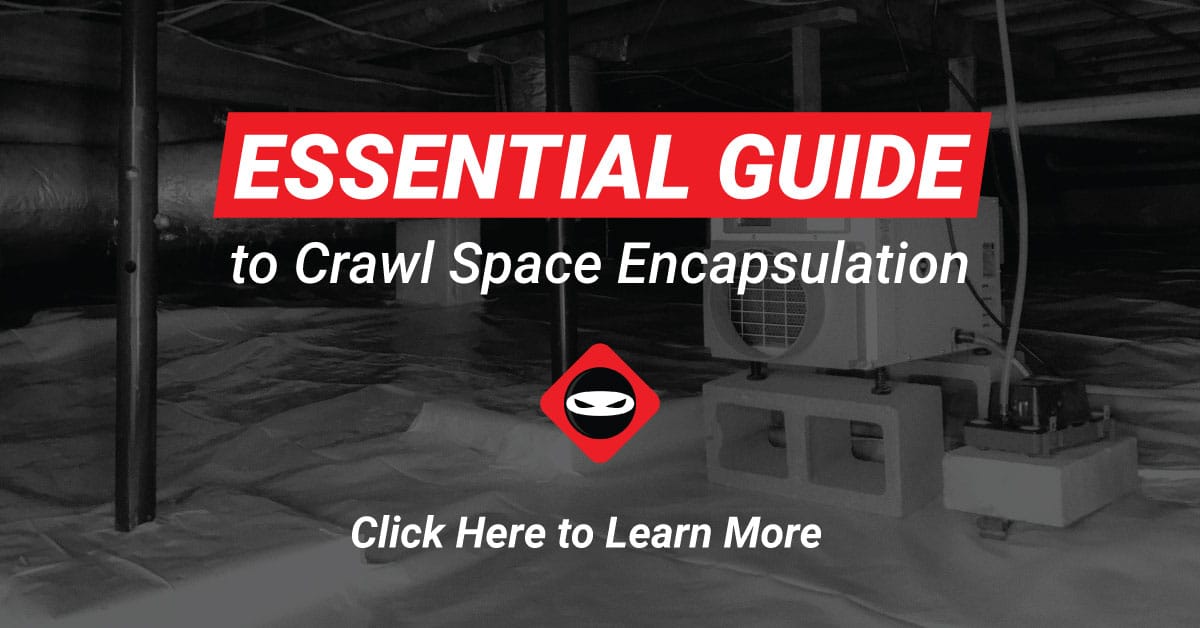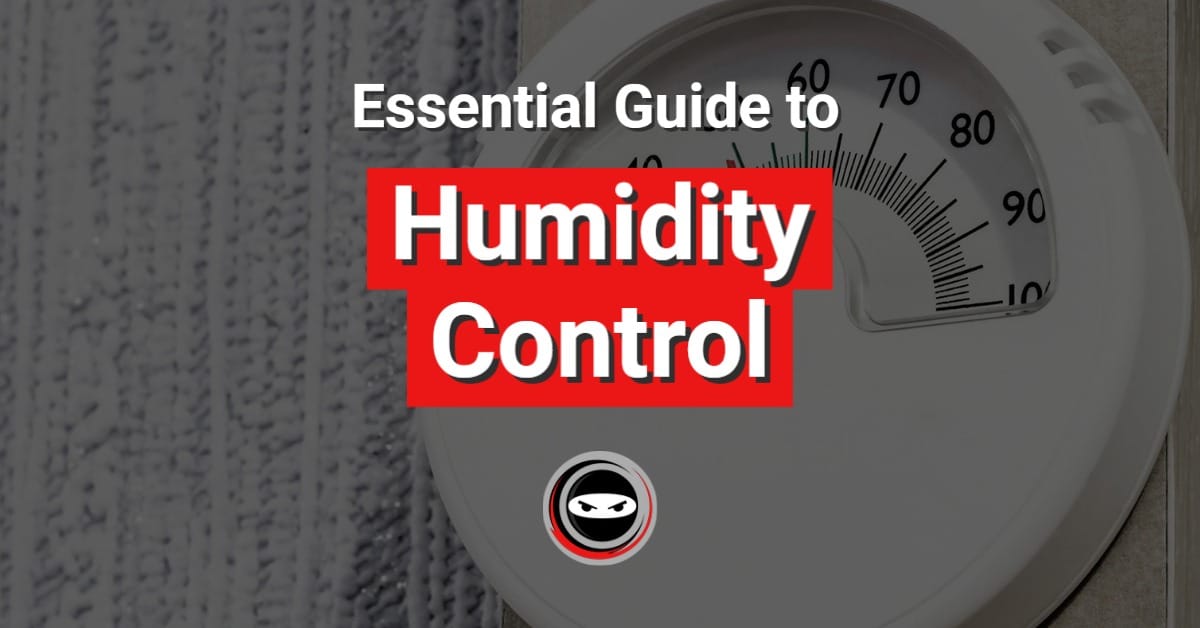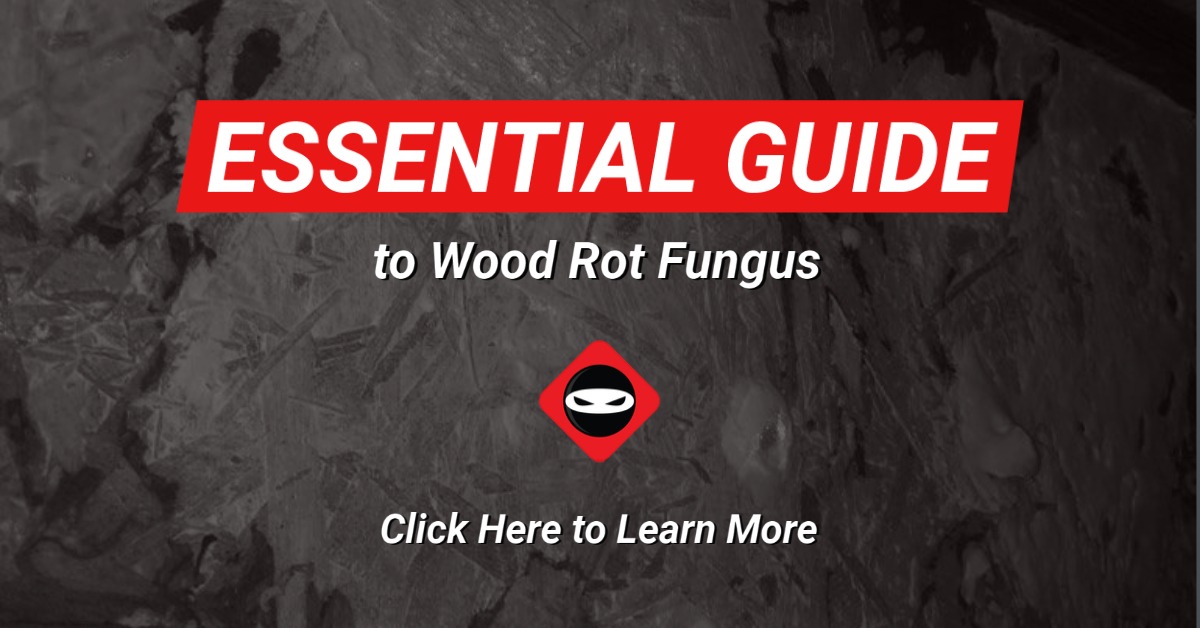“What should the humidity be in my crawl space?” This question comes from many homeowners across the country. Most are asking, “is it normal to have moisture in my crawl space,” as well. We feel the best answer is to have the humidity between 45% and 55%. But keep in mind that temperature also affects moisture levels of the crawl space.

Michael Church’s Crawl Space Repair Myths-Busted book was written to help you Avoid Bad Advice, Bad Decisions, & Bad Repairs.
“This book is the Cadillac for crawl space information and Michael Church is your experienced driver. What can I say? It’s just an amazing read.” 5.0 out of 5 stars The real deal.

 When you mix temperature and humidity this is called the dew point. Having high temperatures and lower humidity can still cause your crawl space to be wet if the temperature is high enough. Also, having high humidity and low temperatures can create a dry crawl space. We see this in really cold areas of the country. This is where grains of moisture is helpful.
When you mix temperature and humidity this is called the dew point. Having high temperatures and lower humidity can still cause your crawl space to be wet if the temperature is high enough. Also, having high humidity and low temperatures can create a dry crawl space. We see this in really cold areas of the country. This is where grains of moisture is helpful.
What is Grains of Moisture
Grains of moisture is a measurement used by water damage professionals to determine how much moisture is in the air. Most of us use relative humidity as a guide to determine the health of your crawl space, but there is way more to it. Grains per moisture (GPM) is the best and most accurate way to determine if your home or the air in your home is wet. Click here to learn more about What is Grains of Moisture.
Can My Crawl Space be Too Dry?
If your crawl space is too dry it can cause dry rot and even affect your health to some degree. Viruses and bacteria can grow unchecked in low humidity homes as well as in high ozone levels. Some people will even get nosebleeds if the humidity is too low. Remember, a proper humidity level is about balance. Having humidity levels between 45% and 55% in the crawl space creates a balance that can affect the rest of your home.What Happens if Humidity is too High?
Humidity that is too high can cause wood rot fungus to grow as well as dust mites. Dust mites can grow unchecked in high humidity environments. High dust mite concentrations are apparent in moist homes with lots of dust. Lowering humidity can help control dust might colonies, which is the number one cause of asthma among children.
Should I Dehumidify My Crawl Space?
You may be thinking, “The crawl space doesn’t matter, it’s not even a part of my home. Why should I care about its humidity level?” Believe it or not, 50% of the air in the crawl space makes its way into the living space. Most homes have a loose-laid vapor barrier and that’s it, but is it enough? If your crawl space is damp, wood rot fungus can begin to grow and destroy your sub-floor. Mold that is growing in the crawl space can travel into your home through the duct system. Air gaps in the sub-floor can allow high humidity and mold to enter your home as well. Making sure your humidity is between 45% and 55% in the crawl space is a great way to prevent indoor air quality problems.
What Next?
Do you need help with mold removal, crawl space encapsulation, crawl space insulation, vapor barrier, waterproofing, foundation repair, or controlling humidity in your crawl space and you live in Georgia, Delaware, North Carolina, South Carolina, Tennessee, Ohio, or Kentucky? If so, please contact us to schedule your assessment. Also, let us know in the comments below if you have an idea for a new blog topic.
Perhaps you’d like to tackle your own crawl space repair. Visit our DIY Store.
Contact us if you need help fixing your crawl space or yard drainage by clicking here.
Learn about Crawl Space Ninja Franchise opportunities.

18 thoughts on “What Should Humidity Be in a Crawl Space”
I had my crawl space encapsulated as well as a sump pump and dehumidifier put in. I noticed that my meter is reading 29degrees humidity. Is this a problem. I know it should be around 40 To 60 thank you in advance
Normally humidity gets really low in cold weather. We recommend a humidifier in living spaces if you notice adverse affects like nose bleeds, etc. Hopefully this video can help. https://youtu.be/rjRQhsyFluo
What fluctuations in crawlspace humidity are normal and acceptable. If the humidity is normally between 45-55%, but spikes sometimes to over 80%, should I be concerned?
Hi Dave, we feel any humidity above 60% and below 40% is a concern because of its ability to promote problems inside the home. Please see this chart for more information. https://crawlspaceninja.com/blog/effective-virus-protection-by-controlling-humidity/ Hope that helps.
My crawlspace initially had no vapor barrier for 20 years. I recently had my crawlspace sealed and a dehumidifier installed set at 55%. A separate hygrometer was also installed for my monitoring. Within a couple months, my floors have become extremely bouncy all over. For instance, I can walk in my kitchen and hear bottles inside my fridge shaking. In some areas, the subfloor makes a “clapping” (not squeaking) noise as if it has become detached from joist. The hygrometer is reading 50-55%. Why are my floors bouncy now when before they felt as stiff as concrete? How would I fix this?
Hi Matthew, I am not sure what is causing the issue for your floors but if they were wet and now are dry, they could have shrunk and left gaps that allows them to bounce and squeak. Adding floor supports like post jacks may correct this. Here is a link to some if you want to DIY this project: https://amzn.to/3Iixnek Hope that helps.
We have a waterfront home (on top of a hill) with an encapsulated crawl space. There is a dehumidifier and a soil gas remediation system installed. The problem is there is a “cat urine” smell in our rancher. In trying to read all we can about crawl spaces, is it the soil gas, the vapor barrier, or what causing this? Should the soil under the vapor barrier been treated prior to encapsulating? Help!
Hi Randy, vapor barrier manufacturers have said it can never be the vapor barrier and to install a soil gas removal system to correct cat pee odors. It seems you have that already so I am guessing the vapor barrier or possible debris left under the vapor barrier could be the issue but if your soil gas system is working, I’d suspect its the vapor barrier. We had a situation that we had to remove the plastic and replace with our no cat pee guarantee vapor barrier to correct the smell. Been cat urine odor free ever since. Here is what I recommend you install if you decide to remove/replace the vapor barrier. Hope that helps. https://diy.crawlspaceninja.com/vapor-barrier/
On this site, they say the cat urine smell is from string reinforced vapor barriers…cauard by the string breaking down. This company uses a non reinforced vapor barrier product.
That is correct, we recommend using a solid vapor barrier versus a multi-layer woven vapor barrier. It is not that the string breaks down but multi-layers trap moisture. Here is a video if you’d like to learn more: https://youtu.be/DXlsC-s1x6Q?feature=shared
I recently had my 1970 Tennessee crawl space encapsulated with drainage, sump pump, vapor barrier and dehumidifier. I am noticing cracks in my drywall now that definitely were not there prior to installation. COUld that be a side effect of lowering the relative humidity throughout the crawlspace?
Hi Adam, it is hard to say for certain what is causing the cracked drywall without doing an inspection. Could be foundation footers sinking due to erosion or wet wood shrinking after becoming dry. Have you had a foundation inspection by a local contractor? If not I’d recommend it, it may be a simple fix like installing some subfloor supports. Hope that helps.
Hi Michael, love your videos. I’ve been deeling with an issue for a few months. Plumber found my rim just along a 50 span was branches with water and covered with mold.
We have a block foundation. Dirt filled porches on from and back. When my block mason was installing the brick banner I had him leave then vents off as my plan was to encapsulate and install dehumidifiers.
As life goes we ran short on money towards in of build. I thought it would be ok for a short time. Well a year past and you know out of site out of mind.
The only thing I can figure out is that the block foundation had the blocks turned sideways where the vents would have went in the block. I wonder if the temper differential along that exterior wall would cause so much condimsation that the entire board would have gotten soaked.
I’ve sense gotten the mold treated and, and the crawl space encapsulated, and two April air 70’s.
It’s been a mystery and no one really understands moisture, humidity around here. Sorry for the book. I just wanted to make sure I’m on the right path.
Hi Jared, yes do all you can to keep the humidity/dew point under control and depending on the size of your crawl space, two Arilaire E070s should do it. I would put some humidity readers in the crawl space so you constantly know what the humidity is. Here is a link to one if you don’t have one: https://amzn.to/42fMmwi Normally we see rim joists sweat from huge temperature swings between inside the crawl space and outside. Also, if the block is hollow and there is no cap block, the moist cool ground air has almost a direct path to the rim joists. This could also cause moisture problems. Hope that helps.
Hi Michael, bought a 70’s ranch in the midwest that had preexisting mold issues in the crawl, and evidence of decades of homeowners doing all the wrong things to control mold and air quality issues.
Watched all your videos, read up on everything, sourced my materials, and even picked up some things from your DIY store (Butyl tape is amazing stuff!). For now, I’ve got a normal (large) room dehumidifier, safely installed, pumped and running down there in the middle of the house. [Two reasons: The access is tiny (12X24 window) and this was all I could fit for now, and $$$]. Sealed all but two foundation vents and installed exhaust fans on those (it’s a long house, so one on each side made sense). Though I’m working on sealing up the HVAC down there, I’ve got a fair bit of supply leaking in all along the house, plus, in theory, I’m pulling a little bit of pressure from the living area. There are no HVAC returns down there to worry about. Oh, and I installed six Wifi hygrometers in the ‘corners’ to keep a close eye on things. (Govee brand) Haven’t been running this all that long, but so far, went from 75+% to averaging about 50% overall.
The dehumidifier is working hard, and I think it gets pretty inefficient under 60F temps. I’m slightly concerned with the electricity costs, and I’m going to start monitoring exactly how much it’s using to maintain these levels. It’s 2700sqft of crawl, average about 3.5ft depth – what dehumidifier should I plan to get in there in the long term?
Also, since the dehumidified is ‘pointed’ in one direction, I notice a fair amount of RH and temp differential, say 5%RH and 4F temp from one side of the house to the other. I can’t tell if this is an effect of the dehumidifier blowing to one side, or simply the depth of the crawl changing or perhaps outside air, or something else? Should I find what’s causing this, or would a simple fan circulating air a little more be advised? Or don’t worry about it?
Lastly, I’m still seeing short-term fluctuations in humidity. We’ve got some humidity sources in the living space right now, primarily lots of painting, so I’m thinking that’s having some effect. But over 24 hours, any one of the hygrometers will report a range from 45% to 58%, sometimes it seems pretty spiky. It’s fairly low humidity outside right now, so I don’t think this is outside coming in. I’ve checked for local sources, leaks and such. Is keeping peaks under ~60RH, and averages close to 50RH acceptable? Am I over thinking this and fluctuations are perfectly normal?
Hi Evan, it sounds like an E100 would be a good size for your situation. You cannot oversize a dehumidifier. Adding some circulation or perhaps ducting the dry air to the far corners with some T or Y splitters directly from the dehumidifier would help even out the humidity some but you will always have it creep up a little the further it is from the dehumidifier. I think keeping it under 60% is ideal (preferably 55%). Sounds like you did a great job. Is your vapor barrier sealed well, I am guessing it is since you used butyl. Thanks for the feedback on the butyl, it took us a while to find a type we liked. Let me know if you have any other questions or if I missed answering something for you.
Need advice. Have encapsulated crawl. House is 15 months old. Noticed a creeking and slight drop in floor from livingroom to kitchen. One large room.
Builder convinced humidity TOO LOW CAUSING PROBLEM. Ive got several meters in crawl. Did notice a low reading of 36 on one of the meters, but generally 45-50 pretty constant.
Located in GA. We have had some bone chilling temps so I cut off the two dehumifiers that I had running. Have only seen slight increase in humidity readings.
Checking beam lvl and laminated beams with moisture meter, cheap variety (choices are softwood or hardwood). Decided to buy a second moisture meter to compare, this one has prongs. Instructions show a list of specific woods which all fall in category of a-h
Since neither the lvl beam or laminated beams are a wood choice that can be used as a selection, Im lost.
Called manufacturer and they transferred me to Lowe’s who of course has no idea. What is a dependable moisture meter to check wood (lvl/laminated beams) in crawl.
Hi Jane, I am sorry you are having issues. We did a video that may help. https://youtu.be/cNmQZQR_2pk?feature=shared